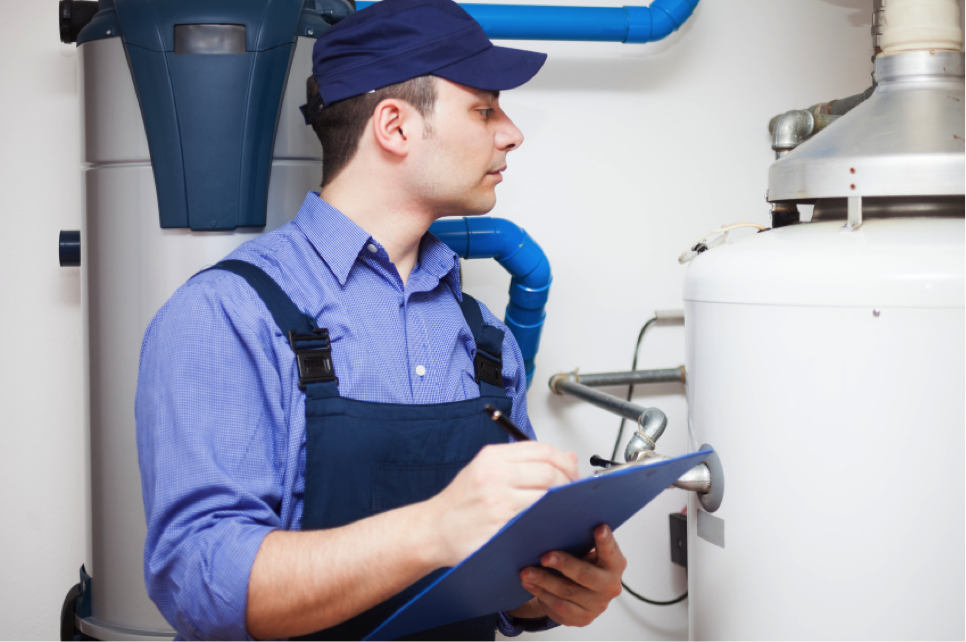Updated December 2025
Been thinking you should get your gas fitter licence, but dragging your feet on starting training? This post is for you.
First, a bit of background: To legally work as a gas fitter in Ontario, you need a gas technician certification from the Technical Standards and Safety Authority (TSSA). You can start with a G3 level certificate—but a G3 only allows you to work on gas-fired equipment under supervision. To work unsupervised, you need a G2 gas certification.
In this post, we're breaking down all the ways a G3 or G2 licence can seriously improve your job options in the trades. We also include information on how training and certification works, so you'll have everything you need to take the next step.
So let's get started. Here are five very good reasons to get your gas fitter licence...and a little inspiration to get off your couch and into a classroom!
1. Steady demand for gas fitters in Ontario
The Government of Canada Job Bank says demand for gas fitters in Ontario should be moderate through 2028. This occupation gets three out of five stars for demand.
So what exactly does a gas fitter do? These tradespeople work for gas utility companies, gas servicing companies—and in the construction industry as building equipment contractors.
A typical day for a gas fitter is spent doing tasks like:
- Installing, inspecting, and repairing gas lines and gas equipment (meters, regulators)
- Installing and servicing gas heating units and components (burners, valves, and automatic controls)
- Testing and replacing defective units and components
- Dealing with gas escape calls and investigating accidents
- Converting appliances to natural gas
- Servicing gas appliances
You can get started as a gas fitter with a G3 licence, but you must get your G2 to work unsupervised.
Don't have either yet? Herzing offers a program that combines both. You start with the G3 and then move on to earn your G2 within the same course. It's the most efficient way to quickly become a G2-certified gas fitter.
2. You Need Your G2 Technician Licence to Work in HVAC
Think you might pursue a career in HVAC? You'll definitely need your G2 to work in this trade. HVAC mechanics work on gas-fired equipment—and need to have a gas licence to enter the field. You must be certified to install, connect, and repair appliances that run on natural gas or propane.
A quality HVAC program will include gas technician training, so you'll have everything you need by the time you graduate.
Our HVAC program runs for 52 weeks and includes preparation for both G3 and G2—so even if you're a total beginner, you'll get the instruction needed to get certified.
3. Plumbers & Appliance Technicians Also Benefit from a gas fitter licence
Want to compete for more appliance repair jobs? Looking to expand your career options as a plumber? You need a gas technician certificate. Only certified appliance technicians and plumbers can install and service gas-fired units.
This is why skilled trades schools often combine plumber and gas tech training. These pre-apprenticeship programs include courses for the plumbing side while preparing students for the G3 exam.
You can do a straight plumbing program—but why not get your G3 while you're at it? G3 is the beginner level, but you'll still be legally allowed to:
- Work under supervision on appliances up to and including 400,000 British Thermal Units per Hour (BTUH)
- Install, activate, test, and purge gas piping or tubing less than 2 1/2 inches in diameter
- Reactivate a previously installed or converted appliance
- Clean and lubricate an appliance
- Clean, remove, or replace a vent connector, venting, or draft control device
4. Just Want More Job Options in the Trades?
Get your gas fitter licence and you'll simply have more job options, period. You can become a gas technician, gas pipe fitter, gas appliance technician, or enter the air conditioning/refrigeration field.
Combine gas technician training with another trade, and automatically double your career prospects. It just makes good sense.
5. Gas Technician Training Starts at Just 12 Weeks
It doesn't take long to earn the first level of gas technician certification. You can complete a G3 training program in just 12 weeks. This is the starting point for gas technicians in Ontario. Your courses will prepare you to challenge the TSSA certification exam.
Check out this post for information on the TSSA exams: Becoming a Certified Gas Technician: 6 Things to Know About the TSSA Exams
Once you've got your G3, you can move on to gas technician 2 training. This program picks up where the G3 left off, with more advanced training on gas-fired equipment.
It takes 24 weeks to get your G2. Once you pass the TSSA exam, you'll be legally qualified to supervise G3 holders and work independently on gas lines, meters, regulators, and appliances with an input up to 400,000 BTUH.
You can stop there, and start building your career as a certified gas fitter—or use your G2 to expand your job options in another skilled trade (like plumbing or HVAC).
After gaining a few years of experience, you could even challenge the G1 gas technician exam. You need 4,000 hours of G2 work experience to qualify for this level of certification.
Get your G1, and you'll be legally allowed to work on any type of gas-fired equipment.
Get started with gas technician training
So there you have it. Some very compelling advantages to getting your gas fitter licence...and a very small investment of time to get started.
Ready to get moving? If you've never taken gas training, your first step is to enrol in a G3 program. We recommend the combined G3 and G2 training, which takes you through both levels in one course.
Have questions?
Click below to explore the TSSA-approved gas technician program at Herzing. Get detailed course info and chat live with admissions.






